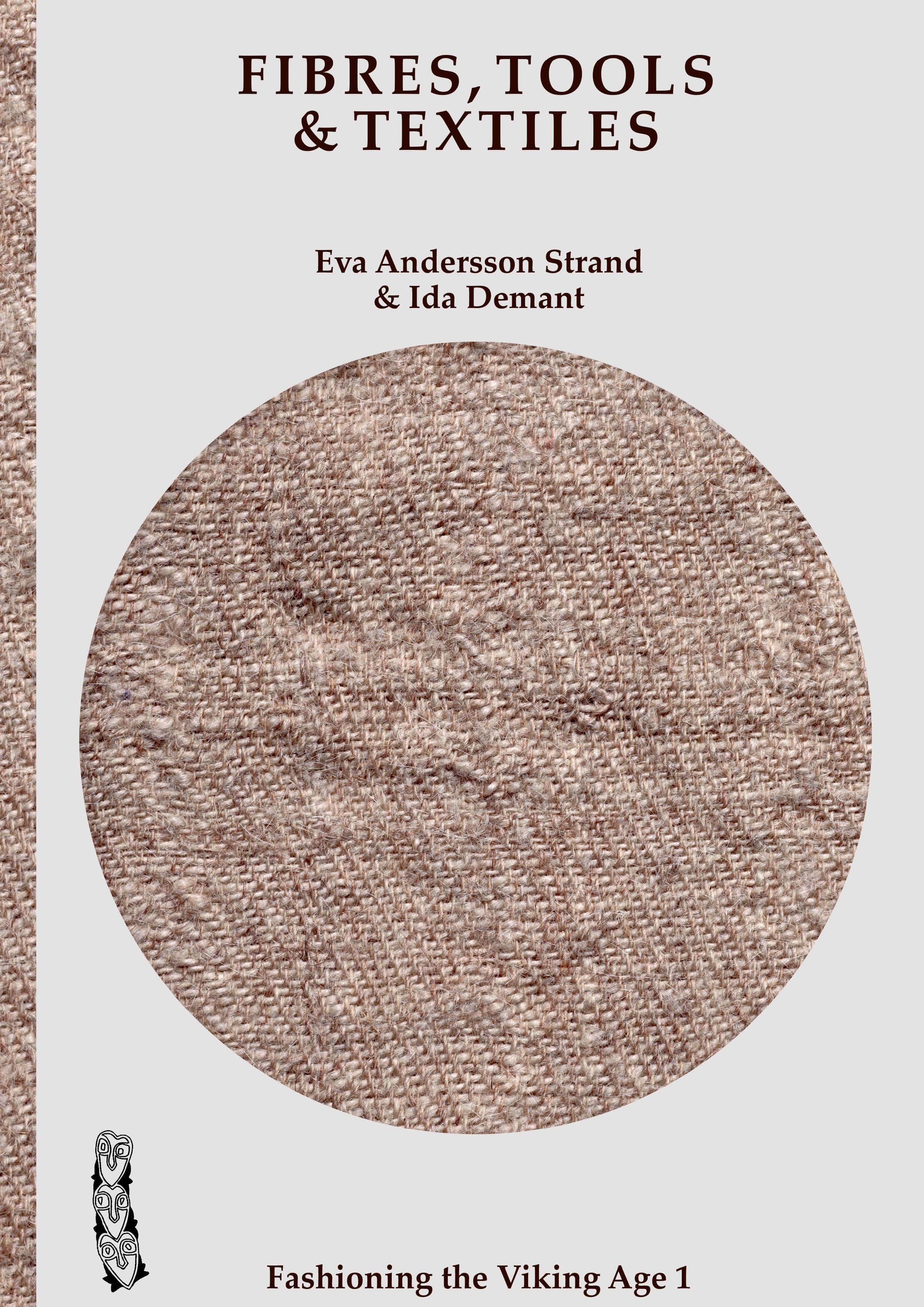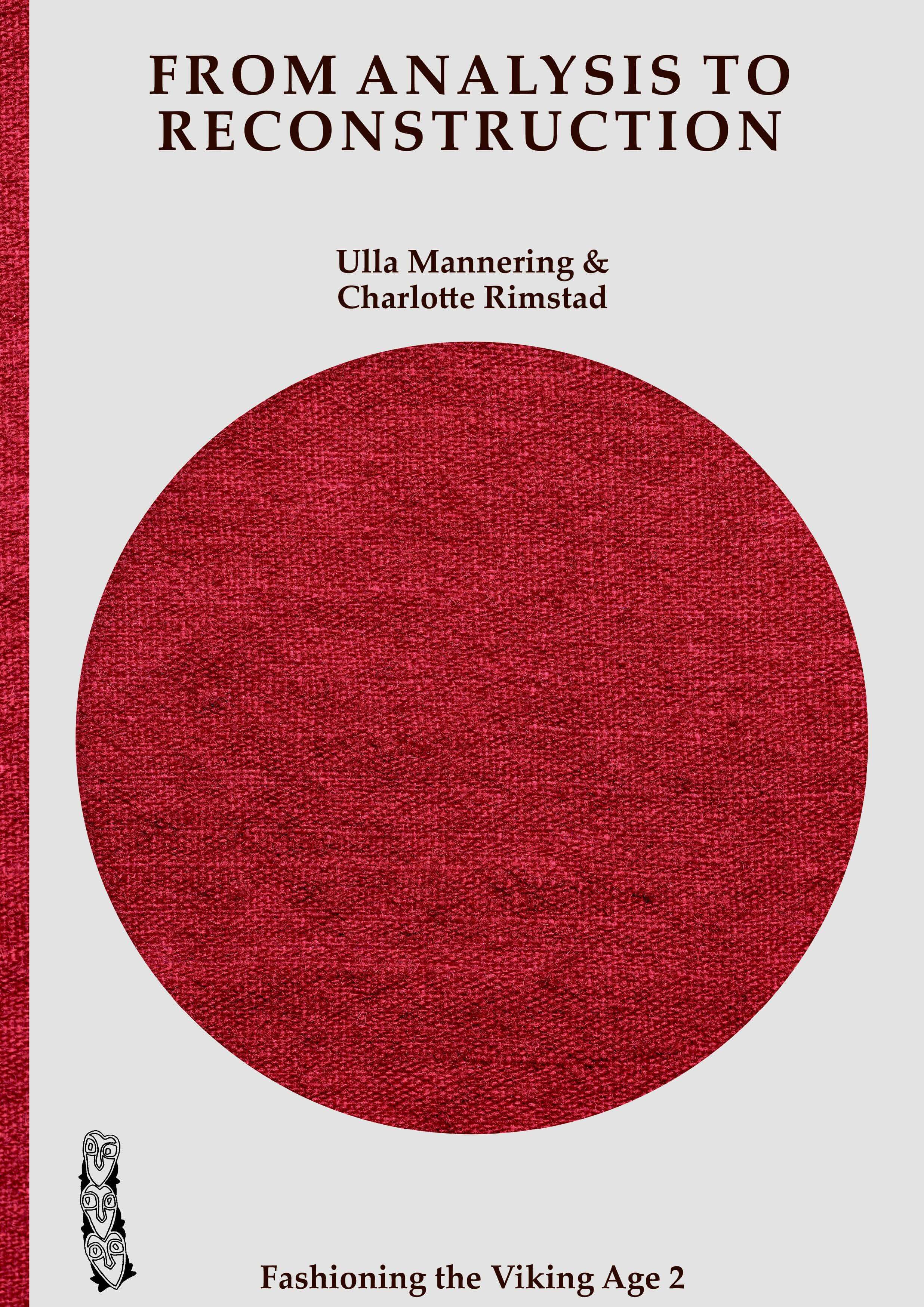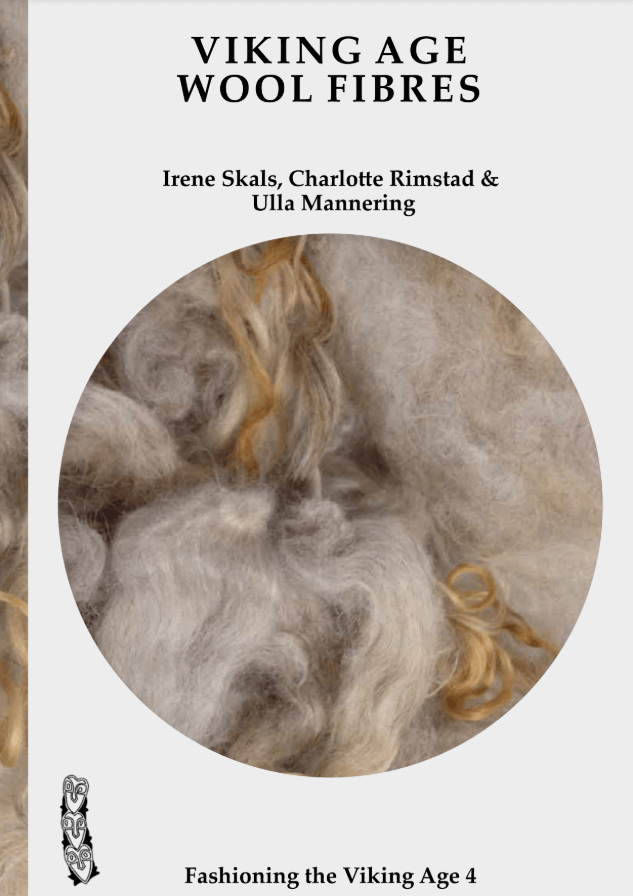Fashioning the Viking Age
Previous CTR project by Ulla Mannering, Charlotte Rimstad, Eva Andersson Strand, Ida Demant, Irene Skals & Mads Lou Bendtsen.
The 1st of September 2018, the Fashioning the Viking Age project, funded by THE VELUX FOUNDATIONS, was launched at the National Museum of Denmark (NM), Department for Ancient Cultures of Denmark and the Mediterranean. The project was a collaboration between NM and Centre for Textile Research, University of Copenhagen (CTR, UCPH) and Land of Legends, Lejre (LL). The general aim of the research and outreach project was to create new and archaeologically well-founded interpretations and reconstructions of Viking Age textiles and clothing.
The Fashioning the Viking Age project consisted of three parts that were interlinked and produced knowledge to one another.
As many archaeological textiles are often small, poorly preserved and visually far from their original appearance, they can be hard for non-textile experts to understand and decode. The aim of Project Part 1, Viking Age Textile Production was therefore to make Viking Age textiles and textile production visible and tactile for a modern audience. This part took its starting point in analyses of known archaeological finds of textile tools and three textiles from the Viking Age settlement Hedeby in North Germany:
- Sample I: H14, fragment of a dress in tabby
- Sample II: H2, fragment of a hose in 2/2 twill
- Sample III: H39AB, fragment of trousers in diamond twill/ herringbone twill
An important part of the project was to come as close to the original textiles as possible. This was obtained via analyses of the archaeological textiles and by using fibres as close to the originals as possible. The fibre analyses showed in a comparison with wool qualities from nine modern primitive sheep breeds that the sampled Hedeby Viking Age wool textiles primarily have a fibre quality matching a modern Spelsau fleece.
Furthermore, it was essential to use tools reconstructed as precise copies of tools from a Viking Age context. Therefore, a substantial part of the project funding was allocated to producing the tools as well as to finding the best and most similar fibre material. By using controlled fibre sorting, spinning and weaving experiments, three textile samples measuring 60 x 60 cm were created that convey the tactile and visual appearance linked to the Viking Age cloth culture. Because of wear and tear, the three originals may have had a smoother surface that would give the textiles a slightly different texture and tactile effect. However, the conclusion is still that we are close to the touch and feel of the originals in their present state. One conclusion was that it would have been possible to produce these textiles in Hedeby with the tools from the site. Additionally, the making of the textiles has revealed the complexity of the production process, and further, shown that even if the same techniques are used, each type of fabric demands its own solutions.
All tools produced and used are now stored in a chest and contains not just tools for spinning and weaving but also tools for other textile techniques such as tablet weaving, cutting and sewing. This is also an important result of the project. Together with the new textile samples the Textile & Tool Box will in the future be used for outreach purposes at universities and museums in order to give a “hands-on” feeling of Viking Age textiles and textile production. The Textile & Tool Box is now based in the CTR TexLab at University of Copenhagen.
Furthermore, this unique material and data will be used for future experiments and tests, and to some extent, this has already happened. Two further textiles have already been produced after specific archaeological textile finds from Hedeby. One test was set up to produce a legal unit of vadmal to get a better understanding of the weaving of a larger cloth. In another experiment, different weaving beaters were tested in relation to different weights of the loom weights. This was done to get a better understanding of the tool´s function and efficiency when weaving.
The aim of Project Part 2, Viking Age Male and Female Clothing was to reconstruct two complete Viking Age outfits, based on textiles from the male grave from Bjerringhøj (also known as the Mammen grave) near Viborg in Jutland dated to AD 970-971, and the female grave from Hvilehøj near Randers in Jutland dated to the late 900s AD. Although the textiles from these two graves are fragmented, they are still larger and more well-preserved than what is the case in most Danish Viking Age graves.
All textiles went through technical analyses under the microscope and were photographed with different high-resolution camera techniques by Roberto Fortuna, NM. The 64 textiles fragments of the embroidered textile from Bjerringhøj were digitally puzzled together using the computer program Adobe Photoshop, which gave ways to new interpretations of the textile design, for example by revealing a secondary use of the high-status textiles. Further, specialist analyses were carried out on the many different materials and details preserved in the two graves, including the many tablet-woven bands and the samite silk textiles. Tannage analyses were performed in order to determine if the skin and fur fragments were vegetable or fat tanned and ZooMS and PFM analyses as well as light-microscopy analyses were used for species identification. This work also included analysis of down and feathers as well as of the shoes in the Hvilehøj grave. Also, more than 75 samples were taken for dye analyses.
During the analysis of the two grave finds several parallel finds were screened for comparisons. During this work it was discovered that the human bones placed in a box labelled “C9166 Slotsbjergby” actually derive from the Bjerringhøj grave and the textile fragments, still adherent to the bones, added more information about the outfit.
In this project part it was decided to focus is on garment shape and visual details, and if possible, to cut corners in the production processes. However, it quickly turned out that almost all fabric qualities had to be produced within the project. High match in fibres, colours and other materials used for the reconstructions were prioritised, whereas the production processes could be optimized using modern tools. When no dye results were available, the choice of colour was based on best match with the overall design, adjusted to what colours that could have been present under the specific preservation conditions.
The male outfit included the following items: A beaver fur caftan, a linen tunic, a wool kirtle, a belt in wool and silk, a wool belt, a pair of trousers, two silk wrist cuffs and leather boots. The female outfit included the following items: A linen dress, a red wool tabby dress with in-woven decorations, a marten fur cape with beaver fur edges and decorations in padded red tabby silk, red samite, a purple 3/1 twill band and a blue silk/silver/gold tablet-woven band, and goat skin shoes with the fur still on. The leather boots and the linen undergarments were not based on archaeological finds from these specific burials but were based on comparative material. They were primarily constructed to make the outfits more comfortable to wear.
During the work in Project Part 1 and 2 it was soon realised how important the match of the fibres between the original find and the reconstruction is to create a successful visual match. Therefore, the emphasis placed on fibre analysis was upgraded and altogether more than 94 fibre samples from Bjerringhøj, Hvilehøj and other comparative archaeological finds and samples of modern sheep breeds have been made during the project period.
The aim of Project Part 3, Viking Age Clothing and Textile Catalogue, was to create an overview of the many different sources linked to Viking Age clothing design and textile production. The preserved archaeological sources consist of preserved skin and textile finds, but also jewellery and other accessories, iconographic sources, such as gold foil figures, pendants and tapestries, contribute with important knowledge about visual appearance and clothing combinations. Further important sources that we have tried to include are contemporary and later written sources, such as the Icelandic Sagas, various travel descriptions and chronicles, which will be presented by Tarrin Wills from UCPH, editor of the Dictionary of Old Norse Prose. All these sources will be gathered and presented in an easily accessible manor in a publication aimed to show and disseminate the variation of the Viking Age cloth culture and to avoid garment stereotypes.
More than 50 researchers, scientists and very skilled crafts peoples have participated in the projects. Some were already employed at NM, while others came from collaborating institutions such as UCPH, the Technical University of Denmark and Aarhus University, or were conducted by independent researchers in Denmark. Other work and analyses had to be done abroad in Sweden, Norway, Czech Republic, Belgium and Great Britain.
Even to the non-textile-specialist it is easy to see that Viking Age skin and textile technology is exquisite and requires high degree of expertise. For the modern crafts peoples much experience was needed in order to produce similar quality item. Finding crafts people today with the same skills proved to be a challenge but was luckily not impossible. Further it is clear that the use of raw materials was valued over the use of working hours in the Viking Age. Fortunately, the generous budget granted for materials made it possible to hire experienced crafts people within the fields of spinning, weaving, dyeing, embroidering, braiding, pattern construction and pottery, wood and metal crafting, as well as experts in tablet weaving, needle binding, bead making, silk weaving, shoe making, fur tanning and sewing. We are grateful for the expertise and engagement of all the people participating in the project.
The two outfits created within Project Part 2, which were finished in the autumn of 2020, were at first planned to be exhibited at the Museum of Cultural History in Oslo, Norway from December 2020 to March 2021. Unfortunately, the exhibition was cancelled due to the COVID-19 pandemic and the closing of the museum for the public. Instead, the museum showed the outfits in an online exhibition on their webpage in the beginning of 2021: Fersk forskning om vikingdrakt – en nettutstilling, UiO Kulturhistorisk museum, 11th of January to 31st of March 2021. The online exhibition had more than 25.000 unique visits.
In the spring 2021, the two outfits were included in the Viking Age exhibition Togtet/The Raid at the National Museum of Denmark. The exhibition has received excellent reviews and especially the two outfits have been applauded as a new and original addition to the understanding and visualization of the Viking Age. For this exhibition UM, CR and EAS also contributed with textile object lists, production of exhibition texts, films, drawings, hands-on items, and updated texts for the NM webpage. On the 24th of June 2021 the exhibition was opened by Queen Margrethe II and UM got the opportunity to present the project and the outfits for the Queen. Already in November 2020, the outfits were presented for the first time to the Queen at a private visit to the museum. Togtet/The Raid will close in the autumn of 2023, but the outfits are planned to continue in the follow-up exhibition, Völven/The Volva which will open in June 2024.
The following articles have been published from 2018 to 2023:
- Mannering, U. 2018. Fashioning the Viking Age, Archaeological Textiles Review 60, 114-117.
- Rimstad, C. 2019. En komfortabel, evig søvn. SKALK 5, 12-15.
- Brandt, L.Ø. & Mannering, U. 2020. Taxonomic identification of Danish Viking Age shoes and skin objects by ZooMS (Zooarchaeology by mass spectrometry). Journal of Proteomics 231, 104038.
- Andersson Strand, E. & Mannering, U. 2021. Skibets sejl – et gigantisk fælles arbejde. In J. Varberg & P. Pentz (red). På rejse i vikingernes verden. Udstillingskatalog. The National Museum, 29-44.
- Andersson Strand, E. & Mannering, U. 2021. The sail – A Gigantic Collective Undertaking. In J. Varberg & P. Pentz (eds). The Raid. Join the Vikings. Exhibition catalogue. The National Museum of Denmark, 29-44.
- Mannering, U. 2021. Fashioning the Viking Age: status after the first three years. Archaeological Textiles Review 63, 139-144.
- Mannering, U. & Rimstad, C. 2021. At rekonstruere de velklædte vikinger. SKALK 2, 10-17.
- Rimstad, C., Mannering, U. Jørkov, M.L.S. & Kanstrup M. 2021. Lost and found: Viking age human bones and textiles from Bjerringhøj, Denmark. Antiquity, 1-18.
- Andersson Strand, E. & Mannering, U. 2022. Vikingeskibets sejl – et gigantisk fælles projekt. SKALK 6, 25-29.
- Brandt, L.Ø., Taurozzi, A.J., Mackie, M., Sinding, M.-H.S., Vieira, F.G., Schmidt, A.L., Rimstad, C., Collins, M.J. & Mannering, U. 2022. Palaeoproteomics identifies beaver fur in Danish high-status Viking Age burials - direct evidence of fur trade. PLoS ONE 17(7), 1-14.
- Mannering, U. & Rimstad, C. 2022. The Danish prehistoric band and cord tradition. In K. Johansen (ed.) Nordic and World Braids and Bands. Proceedings of the Fifth International Conference on Braiding, Braids 2022, Svendborg, Denmark, 16-24.
- Mannering, U. & Rimstad, C. 2022. Fashioning the Viking Age. In K. Johansen (ed.) Nordic and World Braids and Bands. Proceedings of the Fifth International Conference on Braiding, Braids 2022, Svendborg, Denmark, 25-27.
- Mannering, U. & Rimstad, C. 2022. Rekonstruktion af en mandsdragt fra vikingetiden. Tidsskrift for Dragtpuljen og Dragt.dk Nr. 20, 10-24.
- Mannering, U. & Rimstad, C. 2022. En højstatus genbrugsdragt fra vikingetiden. In T. Svendrup (ed.) Underholdning i antikken og middelalderen. Antikkens Venner. Forlaget Ådalen. Aarhus, 75-94.
- Mannering, U., Rimstad, C. & Bendtsen, M.L. 2022. Vikingetidens mandsdragt rekonstrueret. Fund & Fortid 1, 12-15.
- Andersson Strand, E. & Demant, I. 2023. Fibres, tools and textiles. Fashioning the Viking Age 1. National Museum of Denmark.
- Mannering, U. & Rimstad, C. 2023. From Analysis to Reconstruction. Fashioning the Viking Age 2. National Museum of Denmark.
- Mannering, U., Rimstad, C. & Bendtsen, M.L. 2023. Kvinden i rødt – en rekonstrueret dragt fra vikingetiden. Fund & Fortid 1, 40-43.
- Skals, I. 2023. Viking Age wool fibres. Fashioning the Viking Age 4. National Museum of Denmark.
- Vanden Berghe, I., Mannering, U. & Rimstad, C. 2023. New dye analyses of Viking Age textiles from Bjerringhøj, Hvilehøj and Hedeby. Journal of Archaeological Science Reports 103965.
- Mannering, U. 2023. Textile finds. In S. M. Sindbæk (ed.) Northern Emporium II. Vol. 2. The networks of Viking-age Ribe. Jutland Archaeological Society, Højbjerg, 379-383.
- Mannering, U. & Rimstad, C. 2023. The Textiles from the Fyrkat 4 Grave. In L. Gardeła, S. Bønding & P. Pentz (eds) The Norse Sorceress, Oxbow Books, Oxford, 295-304.
- Rimstad, C., Mannering, U. & Andersson Strand, E. Autumn 2023. Sources for Viking Age clothing and textile production. Fashioning the Viking Age 3. National Museum of Denmark.
- Mannering, U., Demant, I., Rimstad, C. & Anderson Strand, E. Autumn 2023. Fashioning the Viking Age 2018 to 2023. NESAT XIV Proceedings. Monographs of the Archaeological Society of Finland, 73-88.
- Andersson Strand, E., Hedenstierna-Jonson, C., Mannering, U. & Vedeler, M. Autumn 2023. Interior Textiles in the Viking Age. University of Copenhagen.
- Demant, I. Autumn 2023. Textile production in the Viking Age, The reconstruction of three textiles from Hedeby. Paper presented at the 38. Interdisciplinary Viking Age symposium 30th of September 2021.
Publications
Fibres, Tools & Textiles

From Analysis to Reconstruction

Viking age wool fibres

